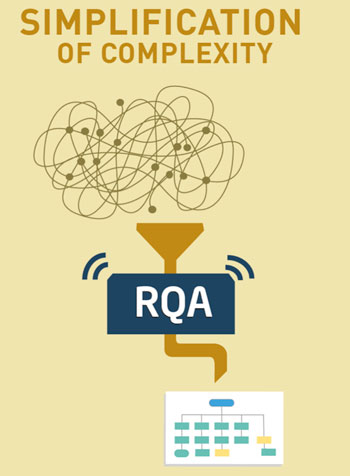
InfoModelling is a proprietary technique to clean up your requirements
InfoModelling has been developed over years of independent research and is proven to be 3 to 4 times more efficient than standard review and inspection methods. Technical and non-technical people easily understand the models we produce. This makes an excellent basis for confirming the design intent with all stakeholders.
Our model-based approach is unique
The Australian Research Council, through its 2008 ARC Outcomes report, identified Behaviour Engineering, the modelling and analysis method behind our approach, as one of the top Australian research and innovation initiatives of the decade that could provide benefit to Australia as a nation. Our approach;
- Finds 30% more major requirements defects than current best practice methods, as used in the defence industry
- Discovers them 3 to 4 times faster
- Identifies validity issues, largely errors of omission, 5 times more effectively
- Clears up ambiguity and allows effective communication to all parties in a project
Getting to know what you don't know
Written requirement statements are inherently ambiguous because we're human. In fact, the scale of most written requirement specifications is so large that the human mind simply cannot comprehend all of the scenarios. Even if we could, our ability to communicate clearly and consistently is limited by human factors like language and memory. Traditional review and gap analysis methods, therefore, fail to identify many serious issues embedded in documented requirements.
Six good reasons to model your requirements
Managing uncertainty through InfoModelling enables you to turn "unknown" unknowns into "known" unknowns.
- Shared Understanding - remove uncertainty through effective, clear communication
- Efficiency - simplify and standardise requirements to reduce technical effort
- Risk - improve accuracy and coverage to reduce the risk of failing to meet expectations
- Predictability - produce repeatable and defensible estimates directly from the model
- Testability - optimise the scope and focus of assurance and testing activities
- Automation - generate automated test plans directly from the model
InfoModelling improves alignment between the business, IT and customer expectations by providing clarity and authenticity to achieve better conversations and a shared and trusted understanding. It helps projects to know what they don’t know.


Ⓒ AccessHQ | All Rights Reserved